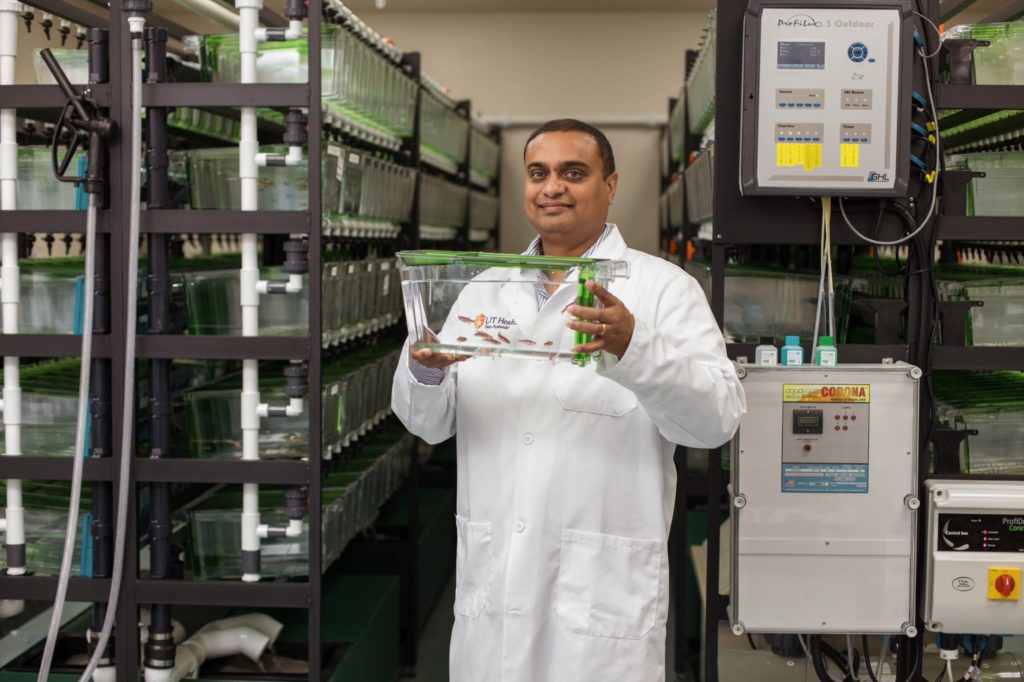Dr. Ignatius is how

The lab of Myron Ignatius, Ph.D., is using zebrafish to learn how stem cell biology causes 30 percent of children who have a rare muscle cancer to relapse and not respond to treatment.
These fish have the unusual trait of being translucent.
“Zebrafish are like a glass of water. You can see right through them,” said Dr. Ignatius, assistant professor of molecular medicine at UT Health San Antonio.
This allows researchers to view through a microscope how tumors are born, grow and spread in live animals.
He is first author of a study published in Cell Reports that shows how two signaling pathways work together to establish treatment-resistant secondary tumors that are biologically different from the original tumor.
Rhabdomyosarcoma is a major soft tissue tumor seen in children. Dr. Ignatius’ lab has been able to see secondary rhabdomyosarcoma tumors form in living fish. By labeling cell types with colors—red, yellow, green and purple—they track the progression of stem cells into immature cancer cells and then into mature cancer cells.
The lab of Myron Ignatius, Ph.D., is using zebrafish to learn how stem cell biology causes 30 percent of children who have a rare muscle cancer to relapse and not respond to treatment.
These fish have the unusual trait of being translucent.
“Zebrafish are like a glass of water. You can see right through them,” said Dr. Ignatius, assistant professor of molecular medicine at UT Health San Antonio.
This allows researchers to view through a microscope how tumors are born, grow and spread in live animals.
He is first author of a study published in Cell Reports that shows how two signaling pathways work together to establish treatment-resistant secondary tumors that are biologically different from the original tumor.
Rhabdomyosarcoma is a major soft tissue tumor seen in children. Dr. Ignatius’ lab has been able to see secondary rhabdomyosarcoma tumors form in living fish. By labeling cell types with colors—red, yellow, green and purple—they track the progression of stem cells into immature cancer cells and then into mature cancer cells.
